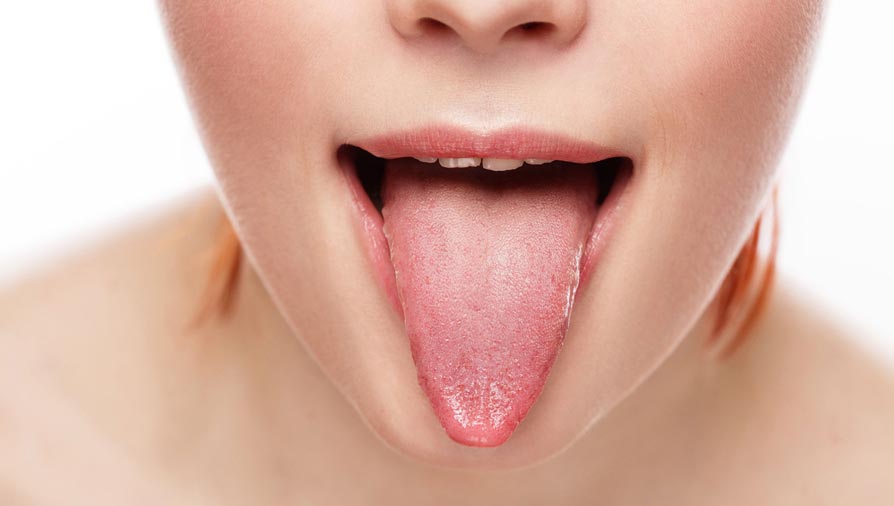There’s a reason why doctors ask us to open up and say “ahh” if we are unwell: What’s happening in your mouth can provide a glimpse into your overall health. In particular, the shape, colour, coating and texture of your tongue can indicate nutritional imbalances and sometimes more serious health issues. Here are some things to look out for.
White patches or a white coating
If you see a thick white coating on your tongue it could be thrush, an oral yeast infection caused by the overproduction of Candida albicans. Thrush is often seen after you’ve taken a course of antibiotics, or in people with weakened immune systems, says Christopher McCullough, a professor of dentistry at the University of Toronto. “It is also common in elderly patients with xerostomia or dry mouth, which is often a side effect of medications.” Oral candidiasis is usually treatable with an anti-fungal liquid rinse.
Changes in colour and texture
On a healthy tongue, those little pink bumps you see are called papillae — hair-like projections that taste buds rest on. “Sometimes when the tongue is red and there appears to be an atrophy of the tastebuds, this can be suggestive of an iron or Vitamin B12 deficiency,” says Dr. Deepika Chugh, an oral pathologist at Mount Sinai Hospital. Vitamin B12 and iron are both needed to grow papillae on the tongue, so if you’re not getting enough of these, your tongue may appear smoother and brighter than normal.
A dark, “fuzzy” appearance
It may be alarming to find a blackish fuzz on your tongue, but it is a fairly common condition, caused when papillae cells become elongated and stained, giving the tongue a darker appearance. If you smoke, drink lots of tea or coffee, or have poor oral hygiene, this can be a common side effect. Like thrush, it’s also “a condition commonly seen in patients following antibiotic treatment,” says Dr. McCulloch. Ensuring you brush your tongue regularly when you brush your teeth is usually all you need to treat it.
Patches or a map-like grooves
Some of us have more grooves and valleys on our tongues than others. If yours appears to have patches giving it a geographic or map-like appearance, “it’s actually a variation of normal anatomy,” says Dr. Chugh, and it’s called geographic tongue. “In many cases there are no symptoms but it can look scary,” says Dr McCulloch, “and this tends to affect women more frequently than men.” It is a harmless condition that may be hereditary, and it is not associated with infection, although it has been linked to psoriasis and stress in some patients.
Red sores or lesions
Not to be confused with a canker sore, which will resolve itself within a couple of weeks, if you see a red patch or lesion on your tongue that is persistent, it could be a sign of oral cancer. Smoking and alcohol use are major risk factors that can lead to non-healing ulcers on the tongue. “Some people will have a lesion and they don’t even know it,” says Dr. McCulloch. “If you have a red spot, feel it – if the spot is hard, that’s a bad sign.” Oral cancer is uncontrolled growth of abnormal cells and occurs mostly on the tongue, lower lip and floor of the mouth. “As a general rule, anything that persists beyond a two-week period or is associated with other signs and symptoms of feeling unwell, or if there are sores elsewhere in the mouth, it’s a good idea to see your doctor or dental professional,” says Dr. Chugh.




